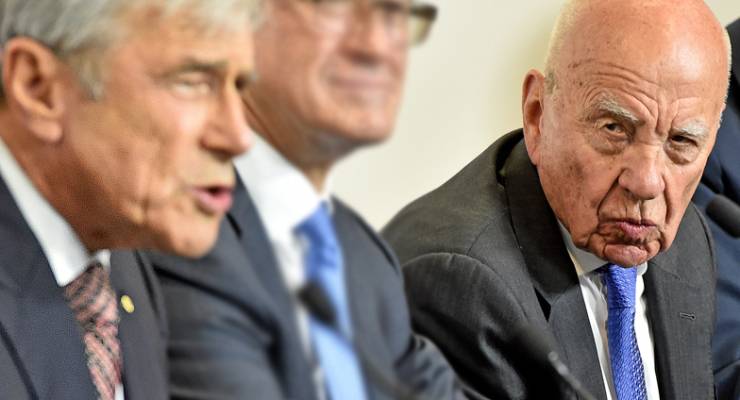
With a key media diversity protection, the two out of three rule, removed from the statutes, we’re trading an era of black-letter law certainty on media diversity for more subjective assessments. And one regulator for another: the Australian Competition and Consumer Commission will now have a greater say over media mergers than the Australian Communications and Media Authority, which henceforth will primarily regulate the media groups test (five in mainland state capitals, four elsewhere). Since only one major market, Adelaide, is even close to the minimum of 5 groups, that means that for the moment, the ACCC will have a greater say on whether mergers proceed.
How it will do so is the subject of the Commission’s new media merger guidelines, issued this morning.
The catch is, the ACCC isn’t supposed to regulate diversity, but competition. They’re very different things. A market of five newspapers all telling you exactly the same thing is competitive, but not diverse. A single newspaper that lets a thousand flowers bloom on its site is diverse, but not competitive. Diversity is a more nebulous concept than competition, because it’s less amenable to measurement; like pornography, you know it when you see it. Despite that, for 30 years, we’ve regulated diversity through black letter law around numbers and rigid definitions, rather than allow regulators (or politicians) to make subjective judgments. Now the ACCC will be making more subjective judgments, though about substantial lessening of competition, not diversity.
While the concept of a “marketplace of ideas” have never been accepted (and rightly so), the ACCC has always given itself a role in relation to diversity by identifying as economic markets not merely advertising, and sale of content, but the supply of content to consumers, even though consumers usually do not pay directly for content on free-to-air broadcasting or the internet. The now-superseded 2006 media merger guidelines specifically refers to news, in each platform or medium, as an individual product, meaning the ACCC will treat it as a market.
The new guidelines are much shorter, and don’t change the ACCC’s approach in relation to diversity a great deal. But one subtle change is its emphasis on quality. This was an issue in the 2006 guidelines: “The ACCC will also consider whether a merged media business could exercise market power by reducing the quality of the content it provides consumers, which could include reducing the diversity of the content it provides,” it said back then. But “quality” now appears to have received an upgrade
“In assessing the likely competition effects in the market, the ACCC will consider not only the impact of a particular merger on the price of a product or service post-acquisition, but also whether the merger is likely to lead to an exercise of market power in non-price ways such as through a reduction in quality. In the context of media mergers, this could include whether a merged media business could exercise market power by reducing the quality or range of content it provides, or whether it will continue to be subject to other competitive constraints.” [ACCC emphasis]
But what’s “quality”? One objective measurement the ACCC uses for quality is the number of ads: in a huge vote of confidence in the skill of Australian advertisers, it says an increase in the number of ads equals poorer quality content. Fair enough. But that’s really not what we’re talking about when it comes to news and current affairs, is it? Is the Daily Telegraph “quality”? Plainly not — it has been repeatedly found to be Australia’s least trusted major newspaper. But how would the ACCC assess it in determining a merger involving News Corp, or perhaps other outlets? Is Sky News’ evening parade of wingnuts “quality”? Is Daily Mail, with its reliance on clickbait, misogyny and stolen stories, “quality”? Quality is just another subjective assessment, like diversity is, so we’re back to square one.
The cross-media laws were an arbitrary and blunt instrument, rapidly becoming out of date. But when it came to diversity protection, they provided the kind of certainty for everyone — consumers and industry alike — that is now gone.








Great mug shots, the photo is worth a thousand words.
Zut is right, but why the hell is he grumpy. No media regulator in Australia has ever discommoded him in the slightest worse luck. The ACCC Bernard does not walk a fine line anywhere. It avoids action at all costs until the ABC or Fairfax, certainly not News Ltd, uncovers a massive scandal. Then 12 months too late it flogs the culprits with a feather and fines them an amount about equal to the CEOs salary. They are worthless in all areas (WIAA).
The ACCC looking at only competition without assessment of where that would be the best for the benifits to the wider population. This can best be seen by the way it treated Telstra when it announced it was to build FTTP. The Clayton’s telecommunications industry being set up at the time by the Howard’s Government would collapsed. As a result we have had to create another government department to build the nbn and with more government meddling we now have a debacle.